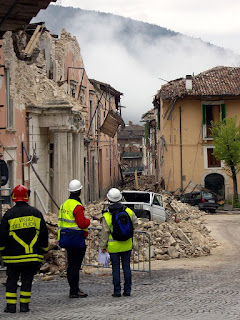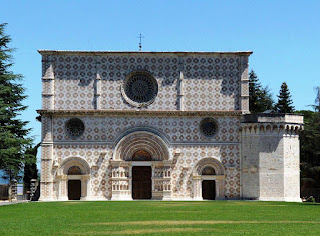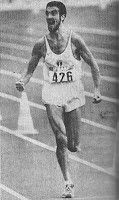Shock measuring 6.3 magnitude killed more than 300
The central Italy region of Abruzzo suffered a major disaster on this day in 2009 when an earthquake with a magnitude of 6.3 caused extensive damage and considerable loss of life in the city of L’Aquila and surrounding villages.
Scenes of devastation confronted
rescue workers after the quake
The main shock struck at 3.32am, when many of the victims would have been asleep, although there had been two smaller tremors the day before in an area with a long history of seismic turbulence, giving rise to speculation that a major quake was imminent.
The epicentre was only a little outside L’Aquila, a city with a population of about 70,000, damaging up to 11,000 buildings in the 13th century city. A total of 309 people lost their lives and such was the scale of devastation that up to 65,000 people were left homeless in the city and neighbouring villages.
It was the deadliest earthquake to hit Italy since the Irpinia quake in Campania killed almost 2,500 people in 1980.
The dead in L’Aquila, a university city, included 55 students killed when their halls of residence collapsed. The 309 victims were of 11 different nationalities, including Italians. The main shock was felt 92 km (57 miles) away in the Italian capital, Rome.
Many of L'Aquila's medieval buildings were badly damaged, including the Basilica of Saint Bernardino of Siena, the city’s largest Renaissance church, and the Basilica di Santa Maria di Collemaggio, while the dome of the 18th-century church of Anime Sante in Piazza Duomo collapsed. Porta Napoli, the oldest gate to the city, was completely destroyed.
 |
| A wrecked local government building near the centre of L'Aquila |
But it was not only the city’s historical centre that suffered. Many of L'Aquila's modern buildings - even those thought to be earthquake-proof - were not able to withstand the shaking, including a dormitory at the University of L'Aquila that collapsed, and a new wing of the city’s main hospital, built only nine years earlier. Shoddy construction was blamed, leaving the city much more vulnerable than it should have been, in the opinion of some experts.
Yet those held to account in the inquiries that followed were not building contractors but six scientists and a government official - members of a government commission for risk assessment - who were placed on trial for manslaughter on the grounds that they had not properly communicated the increased risk following the smaller tremors that preceded the 6 April quake.
In October 2012, a court found that the seven individuals were indeed guilty of manslaughter and each was handed a six-year prison sentence, although those convictions were overturned on appeal two years later.
 |
| The church of Anime Sante, the dome of which collapsed, undergoing reconstruction in 2011 |
Prime minister Silvio Berlusconi pledged to rehouse all of the homeless and provide ample funds to rebuild the city, yet reconstruction work was slow, mired in political wrangling, bureaucracy and corruption. The tented camps remained in place for far longer than planned and even 10 years on, some 2,000 families were still living in prefabricated, temporary accommodation.
Many of the damaged houses in the historic centre of the city are still unrepaired yet some residents moved back into them anyway. Parts of the centre are beginning to look as they did before the quake, after meticulously reconstruction of many historic buildings, although others remain clad in scaffolding and some areas still resemble buildings sites, with cranes towering above the rooftops.
Travel tip:
The Basilica di Santa Maria di Collemaggio,
with its distinctive pink and white facade
The capital of the Abruzzo region, L’Aquila was built in the 13th century on a hill within the valley of the Aterno river. Its construction was started by Frederick II, Holy Roman Emperor, and completed by his son, Conrad IV of Germany. It was destroyed by Conrad’s brother, Manfred in 1259, but rebuilt by Charles I of Anjou, who surrounded it with walls. Many of the buildings that attracted visitors to the city before 2009 have been restored, including the 12th century Basilica di Santa Maria di Collemaggio, with its distinctive exterior of alternating pink and white stone blocks, and the 15th century Basilica of San Bernardino, which reopened in 2015 after six years of restoration work that cost around €40 million.
Travel tip:
L'Aquila's elegant Piazza del Duomo, the heart
of the city, as it looked in 2007
Apart from its religious buildings, L’Aquila is attractive for its maze of narrow streets, lined with Baroque and Renaissance buildings, and its elegant squares. As home to the University of L'Aquila, it has a lively atmosphere and many cultural attractions, including a symphony orchestra, a fine-arts academy, a state conservatory, a film institute and a repertory theatre. Situated in a valley in the Apennines in the shadow of the Gran Sasso massif, it is also close to a number of ski resorts.
Also on this day:
1483: The birth of painter and architect Raphael
1901: The birth of social activist Pier Giorgio Frassati
1926: The birth of tenor and actor Sergio Franchi
1957: The birth of race-walking twins Maurizio and Giorgio Damilano
(Picture credits: rescuers by University College London; local government office by TheWiz83; church of Anime Sante and Piazza del Duomo by RaeBo; Basilica by Stemonitis; all via Wikimedia Commons)























